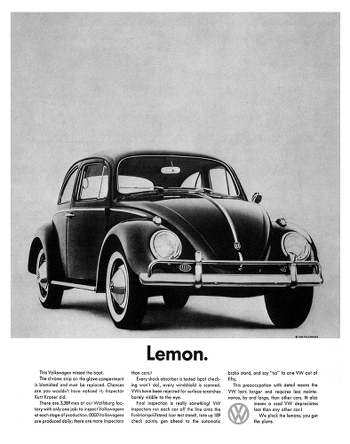
Humans are obsessed with the unknown.
Although our psyche fears the unknown, that fear is balanced by the innate drive of curiosity: we want to uncover the wizard behind the curtain.
This sense of mystery is present in all great storytelling: you can’t wait to hear what happens next. When you hear someone say, “I saw the ending coming,” you assume they didn’t enjoy the movie and that it’s unlikely you would either. Without mystery, our interest fades.
The same principle holds true in business. Everyone has heard the local car dealership advertisement where nothing is left untold: “No credit, no problem. Every car, every model.” You could probably figure out what they’re going to say as soon as the ad starts.
Not everything needs to be directly presented to your customer. This is counter to many modern marketing practices where companies constantly try to expose different aspects of the brand in the hope that something might stick. Enticing customers to discover positive things about your brand on their own creates a deeper relationship and increases the chances that they will talk positively about you.
The VW Beetle
Creating mystery is something great advertising has been doing for decades. But, the form was different.

In 1960, Bill Bernbach led art director Helmut Krone and copywriter Julian Koenig to create one of the most famous and successful ads in marketing history: a photo of a VW Beetle with the declaration “Lemon.” It’s almost impossible not to think: “Why is this car a lemon? It looks perfectly fine.”
And, you’re compelled to read the next seven paragraphs of the ad to find out why. In reading them, the consumer develops trust for the brand and ends up feeling closer to the brand—spending time (a valuable commodity) with a brand creates a stronger relationship.
The Man In The Hathaway Shirt

In 1951, David Ogilvy used the same tactic when he created the first ad in his “The Man in the Hathaway Shirt” campaign. In the photo, he placed an eyepatch over Baron George Wrangell. How can you not wonder: “Who is this man and why does he have an eyepatch?”
Rather than explain who the man was, in the longform copy he explained what type of person would wear Hathaway shirts. And, how could you not want to be that type of person, one who evokes an air of mystery?
In the first week, all of the Hathaway shirts in New York sold out and a small, unknown 116-year-old company became a major competitor.
The Most Interesting Man In The World
You may be thinking that there is no way the modern consumer would read seven paragraphs of copy in your ad. But, that’s really an irrelevant question. You have a much easier job: you have the Internet. On the Internet, consumers can easily interact with the brand in multiple dimensions.
The key isn’t the long-form copy, but rather to actively engage customers in positive ways with the brand.
In 2006, Dos Equis launched its nod to Ogilvy’s Hathaway man with its highly successful “The Most Interesting Man In The World“ campaign. Throughout a decade of commercials, Dos Equis slowly released fantastic information about the man: he lives vicariously through himself, mosquitos refuse to bite him purely out of respect, his two cents is worth thirty-seven dollars in change. Inspired by his crazy accomplishments and debonair appearance, people jumped online to learn more about him: What actor plays him? Where is he from? What other things has he done?
In exploring The Most Interesting Man in The World, you can’t help but develop positive associations with him and the brand. And, not only do you end up wanting to be like him, but he’s also like you—he doesn’t always drink beer. Even though he’s fantastic, he’s easy to identify with.
The strong relationship The Most Interesting Man In The World created with consumers resulted in strong sales: they shipped 116.6% more barrels in 2013 than 2008, making them the fastest-growing beer brand.1
Create Your Own Mystery
Mystery is a powerful marketing tool: it engages customers and drives them to create a strong relationship with your brand.
When thinking about how mystery can work for you brand, ask yourself the following questions:
- How can I capture the imagination of my customers and compel them to learn more?
- What should they find when they start to dig deeper?
- How does what they find contribute to positive associations with the brand?
- How does what they find contribute to their identification with the brand?
Stay mysterious my friends.
_______________________
- Thomas C. Frohlich, “America’s fastest-growing beer brands,” USAToday.com, 2014. ↩
